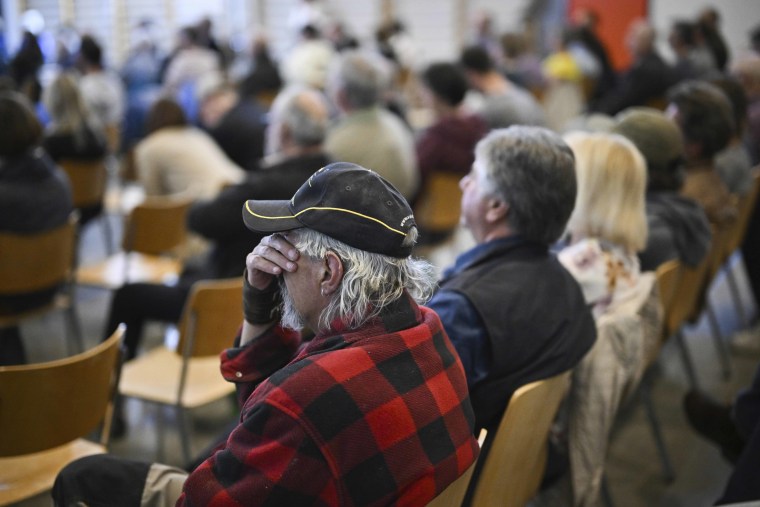
High up in the Swiss Alps, a tiny village’s picturesque scenery may also be its undoing.
By sundown Friday, the 100-odd residents of Brienz must evacuate their homes — or risk being crushed by 70 million cubic feet of rock. A huge chunk of the Lenzerhorn mountain, which looms over the village’s red terracotta rooves and rustic green shutters, might be about to collapse as soon as next week, officials have warned.
“The mood in the village is very sad,” Elisabeth Arpagaus, 85, who has lived here for more than half a century, told NBC News. “People in the village are being torn apart.”
Perched on the mountainside at an altitude of 3,800 feet, Brienz’s geological predicament is hardly new.
The village 15 miles from Davos has been sliding down the valley probably since the last ice age 11,000 years ago, according to the local government website. In more modern times, climate change is putting Switzerland and other countries at greater risk of natural disasters, as higher temperatures increase erosion, officials say.

What worries geologists now is a rock “island” of 70 million cubic feet above the village that has “accelerated significantly” since the fall, Christian Gartmann, the region’s crisis manager, wrote on his website last month.
On Tuesday, this movement prompted officials to move to “phase orange,” meaning a rockfall or landslide is expected within one-to-three weeks. All residents and small animals must be gone by 6 p.m. Friday (noon ET), and will only be given temporary daytime access to return.
That will shift to phase red once collapse is thought to be 3-to-10 days away, necessitating the removal of livestock and banning any reentry. The final warning, phase blue, means collapse is imminent.
“I am very sad that I had to leave,” Arpagaus said with a sigh, recalling the “beautiful view” from her home that she says she now misses dearly and which may soon be lost for good.
The mother of five had been living alone but said residents met regularly to attend hiking groups, women’s clubs and other gatherings.
“We knew that something might happen some day,” she said, describing occasional rockfalls over the years. “But now that it is so imminent makes it difficult.”

The most likely scenario, at 60% probability, is a series of rockfalls causing damage to the upper edge of the village, wrote Gartmann. There is a 30% chance of a slow landslip traveling three-to-six feet per day, causing “major damage” if it reaches the village, he said.
Least likely but most devastating would be a “major rockslide” that would wreak “very serious” damage on the village and surrounding area, said Gartmann, who gives this scenario a probability of 10%.
The outcome “cannot be predicted until the last moment,” he said.
Residents are been kept up to date with texts, emails and tweets. If officials believe a “rapid” evacuation is needed, alarms would blare out across the valley, the Brienz website said.
Switzerland’s major insurances companies have said they will cover damage, although residents will have to partially fund their temporary relocations, the village’s website said.
For many, however, this is not about money. Their tightknit community now finds it’s scattered throughout the region in temporary accommodation, where they may have to stay for weeks or months, depending on how long the emergency lasts.
“There is nothing you can do, you have to get through this and I am a strong woman,” Arpagaus said. “The whole world is thinking of us,” she added, referring to the widespread news coverage.
Before her hometown gets smashed with boulders or buried entirely, however, there’s something she needs to go back for Friday before the town gets locked down.
“I will return one more time today,” she said, “to pick up a frying pan.”

 Latest Breaking News Online News Portal
Latest Breaking News Online News Portal




